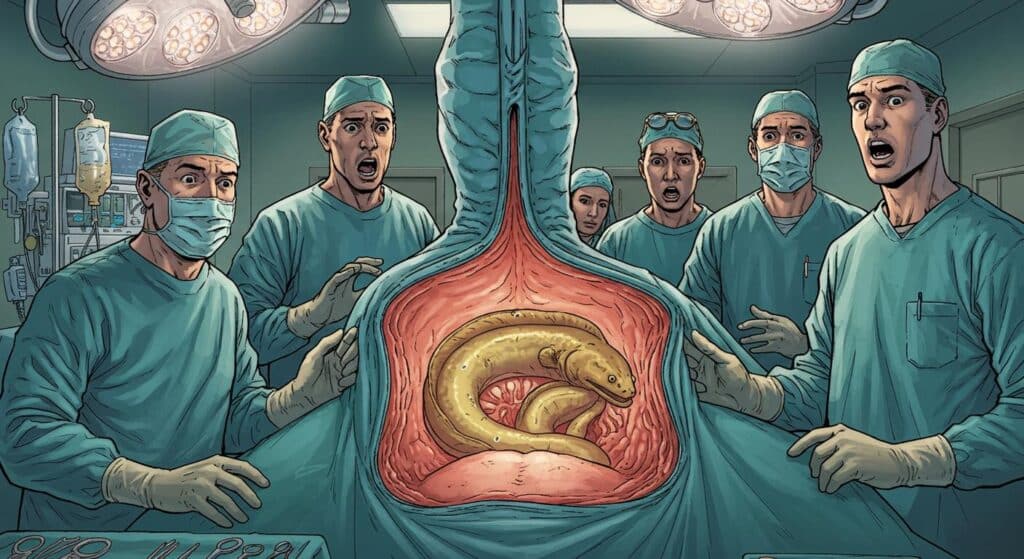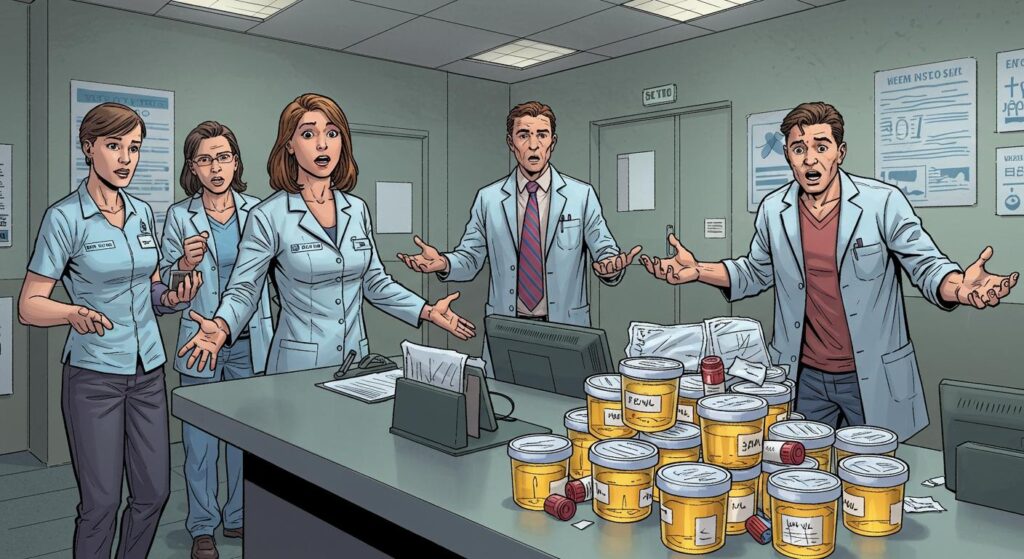If you’ve ever wondered about the outer limits of do-it-yourself healthcare, look no further than a recent case detailed by UNILAD Tech and based on a report in the Irish Medical Journal. The subject: an unnamed man from Ireland, whose plan to treat chronic back pain with injections of his own semen saw results that were memorable for all the wrong reasons.
The Chronicles of Unorthodox Self-Medication
According to UNILAD Tech, the man spent a year and a half injecting himself with his own semen—apparently convinced this rogue elixir might calm his suffering back. He managed this with a hypodermic needle bought online; one suspects the source of the treatment protocol was not exactly evidence-based medicine.
He finally sought hospital care after, as the outlet documents, lifting a heavy steel object left him with severe, sudden-onset lower back pain. Yet it was his strangely swollen, red arm that drew even more attention from his doctors. At this point, he admitted to his unique regimen—clarifying that, on this occasion, he had injected three doses into his blood and muscle at once.
Medical experts cited by UNILAD Tech relay that things quickly took a turn for the worse: the man developed subcutaneous emphysema, a condition in which gas or air gets trapped under the skin. He was swiftly given intravenous antimicrobial treatment. Once his symptoms eased, the man discharged himself—leaving a medical mystery as to his subsequent fate.
An Exercise in Medical Isolation
UNILAD Tech highlights comments from Dr. Lisa Dunne, whose writeup in the Irish Medical Journal emphasized just how singular the case was. Even after checking “more eclectic internet sites and forums,” as Dunne put it, there was no sign of anyone else attempting to inject semen for pain management. Although obscure animal studies exist, the journal found no documentation of intravenous semen injection in humans for any purpose.
With the internet’s bottomless supply of questionable remedies, it is oddly impressive to find a method totally without online precedent—at least, according to the search described in the IMJ and relayed by UNILAD Tech.
Lessons—Or Lack Thereof—from the Archives of Folk Remedies
The report referenced by UNILAD Tech connects this episode to a long and colorful tradition of oddball cures, many of which ended up relegated to the dustbin of history once science entered the room. This particular experiment occupies an especially uncharted (and now, well-documented) territory. The Irish Medical Journal stressed that self-experimentation with substances not designed for intravenous use—no matter how “natural”—carries predictable dangers for soft tissue and vascular health. In this respect, the case serves as a certified one-off cautionary tale.
The Enduring Lure of the Unproven Cure
What compels someone to trade their well-being for an entirely unique DIY therapy? UNILAD Tech leaves the question open, even as it notes this is thought to be the world’s first recorded instance of such a method. Desperation, internet sleuthing, or simply a belief in the power of bespoke solutions? Perhaps all three—plus a touch of that eternal hope that an untried remedy might be the one that works.
Earlier in its report, the outlet also points out that the hospital staff, although seasoned in the world of human oddities, likely walked away from this case with a new standard in unusual home treatment stories. The Irish Medical Journal’s understated medical advice could hardly be improved upon: it’s best to leave the diagnosis—and the needles—to the professionals.
Still, you have to wonder—how many other offbeat, ungoogleable “remedies” are quietly being tested right now, waiting for their own moment in the spotlight?







